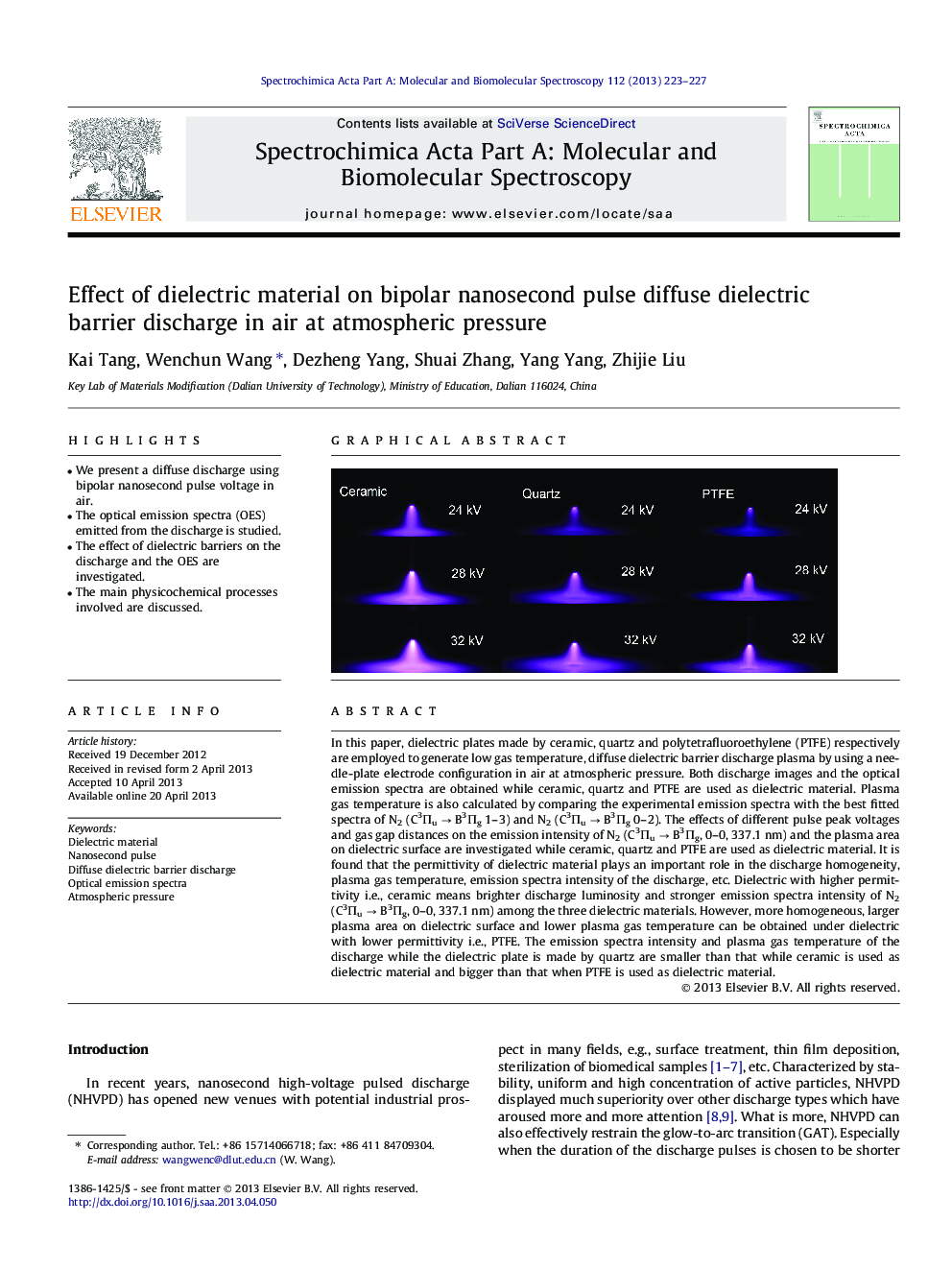| Article ID | Journal | Published Year | Pages | File Type |
|---|---|---|---|---|
| 1230739 | Spectrochimica Acta Part A: Molecular and Biomolecular Spectroscopy | 2013 | 5 Pages |
•We present a diffuse discharge using bipolar nanosecond pulse voltage in air.•The optical emission spectra (OES) emitted from the discharge is studied.•The effect of dielectric barriers on the discharge and the OES are investigated.•The main physicochemical processes involved are discussed.
In this paper, dielectric plates made by ceramic, quartz and polytetrafluoroethylene (PTFE) respectively are employed to generate low gas temperature, diffuse dielectric barrier discharge plasma by using a needle-plate electrode configuration in air at atmospheric pressure. Both discharge images and the optical emission spectra are obtained while ceramic, quartz and PTFE are used as dielectric material. Plasma gas temperature is also calculated by comparing the experimental emission spectra with the best fitted spectra of N2 (C3Πu → B3Πg 1–3) and N2 (C3Πu → B3Πg 0–2). The effects of different pulse peak voltages and gas gap distances on the emission intensity of N2 (C3Πu → B3Πg, 0–0, 337.1 nm) and the plasma area on dielectric surface are investigated while ceramic, quartz and PTFE are used as dielectric material. It is found that the permittivity of dielectric material plays an important role in the discharge homogeneity, plasma gas temperature, emission spectra intensity of the discharge, etc. Dielectric with higher permittivity i.e., ceramic means brighter discharge luminosity and stronger emission spectra intensity of N2 (C3Πu → B3Πg, 0–0, 337.1 nm) among the three dielectric materials. However, more homogeneous, larger plasma area on dielectric surface and lower plasma gas temperature can be obtained under dielectric with lower permittivity i.e., PTFE. The emission spectra intensity and plasma gas temperature of the discharge while the dielectric plate is made by quartz are smaller than that while ceramic is used as dielectric material and bigger than that when PTFE is used as dielectric material.
Graphical abstractFigure optionsDownload full-size imageDownload as PowerPoint slide
